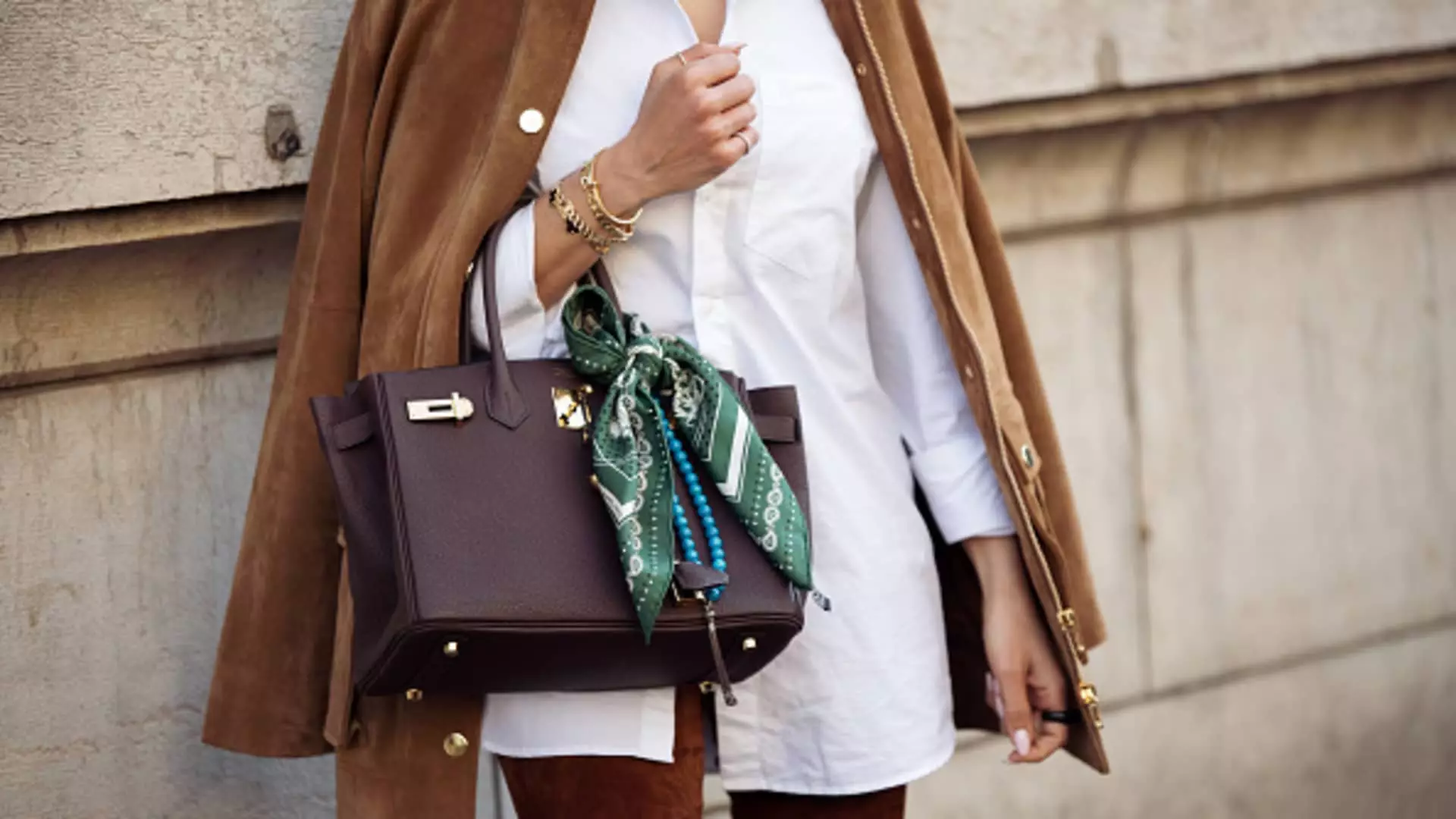In a calculated response to the U.S. government’s swelling tariffs, French luxury titan Hermès announced a price increase across its American market beginning May 1. While some may see this as a necessary adjustment, it’s essential to question the very nature of such actions and their implications for both the brand and its clientele. The decision, articulated by company finance chief Eric du Halgouët, underscores a critical trend: the intertwining of political landscapes and luxury retail pricing—a phenomenon that reflects not merely financial tactics but also deep-seated trends in consumer sentiment and brand perception.
Luxury brands like Hermès are not merely retail entities; they are cultural icons that embody the ideals of success, exclusivity, and aspirational living. Each price tag, particularly for high-end products such as the coveted Birkin and Kelly handbags, is an expression of lifestyle and status. Yet, when faced with external economic pressures, such as tariffs, how these brands maneuver comes under scrutiny. The sharp increase in prices could lead to a gradual erosion of the brand’s perceived value. If Hermès increases its prices to offset tariffs, it risks alienating a customer base that prides itself on exclusivity—will customers still feel a sense of luxury if they feel the brand is reacting out of economic necessity?
Market Dynamics Intersecting with Cultural Sentiment
Hermès finds itself in a unique situation as it recently surpassed LVMH in market capitalization, becoming the largest luxury firm globally. Yet, this competitive triumph now shades internally laced vulnerabilities. Following the latest quarterly results, which displayed an 11% sales growth in the Americas despite the impending price hikes, it seems consumers are willing to absorb costs—at least for now. But the broader question remains: how sustainable is this growth in an era where economic uncertainty looms ominously over consumer spending?
The recent numbers signal more than mere profitability; they reveal a consumer psyche grappling with tariffs while holding onto a nostalgic allure for Hermès. Despite posting robust figures, the concern arises from sections where revenue dipped, notably watches and perfume sales. As the luxury sector faces challenges, it’s imperative to question whether a price increase will, in the end, uplift their standing or backfire, pushing loyal customers towards alternatives that seem more economically sound. In times of financial stress, even affluent consumers reassess their choices.
Tariffs: A Double-Edged Sword for Luxury Parity
While analysts opine that luxury brands might experience a softer impact from tariffs due to their clientele’s spending habits, the reality showcases a nuanced narrative. Hermès’ maneuver to ramp up prices in the U.S. market serves as both a shield against economic pressures and a potential deterrent for casual buyers, who may feel increasingly burdened by rising costs on luxury goods.
This paradigm shift poses interesting questions about consumer loyalty and brand identity. Will consumers feel more aligned with a brand that seems to embrace a strategy of maintaining profit margins against external pressures, or will they withdraw in favor of brands that offer a semblance of resilience and understanding of the average consumer’s plight? The luxury sector’s survival may hinge on its ability to better communicate and connect with its audience amid changing economic landscapes.
The Global Perspective on Consumer Spending
The global canvas of consumer spending paints a daunting picture against the backdrop of tariffs and recession fears. U.S. consumers are already grappling with higher costs across multiple sectors, leading to the overarching possibility of a consumer pullback. While Hermès races ahead in its fiscal race, it must also recognize the shifting tides of its market—the brand’s attention to economic indicators is vital in maintaining its competitive edge.
As other luxury retailers adapt to a changing environment, how Hermès manages its unique situation could serve as an instructive case study. Rather than simply viewing tariff-related pricing adjustments as a standard operational response, Hermès has an opportunity to redefine luxury in a changing economic landscape—transforming challenges into avenues for outreach and brand reinforcement. In considering alternatives, perhaps more brands beyond Hermès need to innovate, consolidating their market positionality without immediately resorting to price increases.
In essence, the question is not merely how will Hermès respond to tariffs, but rather, how will it sustain its influential leadership by ensuring that aspirational lifestyle remains attainable and relevant to its consumer base? The luxury retail narrative now relies heavily on strategy, connection, and understanding during unprecedented times.


Leave a Reply